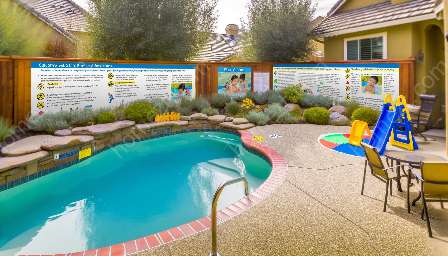Drowning poses a significant risk, especially in home pool environments. Understanding these risks is crucial to ensuring home safety and security. In this comprehensive guide, we'll explore the potential dangers of drowning, the importance of home pool safety, and practical measures to prevent drowning incidents.
Drowning Risks
Drowning is a leading cause of accidental death worldwide, and many of these tragedies occur in home pools. Understanding the specific risks can help homeowners take necessary precautions to prevent such incidents.
Factors Contributing to Drowning Risks
- Supervision: Lack of adult supervision, especially for children, significantly increases the risk of drowning.
- Water Safety Knowledge: Inadequate knowledge about water safety and drowning prevention can lead to hazardous situations.
- Physical Barriers: Ineffective or poorly maintained barriers around pools can allow unsupervised access, increasing the risk of drowning incidents.
- Water Environment: The specific characteristics of the water, such as depth, temperature, and clarity, can contribute to drowning risks.
- Complacency: Overconfidence or a relaxed attitude towards water safety measures can result in increased risks.
Impact of Age and Swimming Ability
The risks of drowning are particularly high for young children and individuals with limited swimming abilities. Understanding these demographics' vulnerabilities is essential for creating targeted preventive measures.
Home Pool Safety
Adhering to proper home pool safety measures is crucial for reducing the risk of drowning incidents. Here are essential steps to ensure home pool safety:
Installation of Safety Barriers
Installing secure fencing and gates around the pool area can prevent unauthorized access and enhance safety for children and pets.
Supervision and Vigilance
Providing constant adult supervision and implementing vigilant monitoring during pool use are paramount for preventing drowning.
Swimming Skills and Education
Encouraging swimming lessons and water safety education for family members, especially children, can significantly reduce the drowning risk.
Emergency Preparedness
Having essential emergency equipment, including lifebuoys and reaching poles, readily available near the pool can aid in swift responses to potential drowning incidents.
Overall Home Safety and Security
While focusing on home pool safety, it is crucial to consider broader safety and security measures within the home environment.
Surveillance and Alarms
Installing surveillance cameras and pool alarms can provide additional layers of protection, alerting homeowners to potential pool-related emergencies.
First Aid Training
Conducting first aid and CPR training for family members can equip them with lifesaving skills in case of drowning emergencies.
Regular Maintenance
Consistent maintenance of pool facilities, including checking for any potential hazards or malfunctioning safety equipment, is vital for overall home safety and security.
Conclusion
Understanding the risks associated with drowning and the importance of home pool safety is fundamental for creating a secure home environment. By implementing appropriate preventive measures and staying vigilant, homeowners can significantly reduce the risk of drowning incidents and promote overall home safety and security.

























